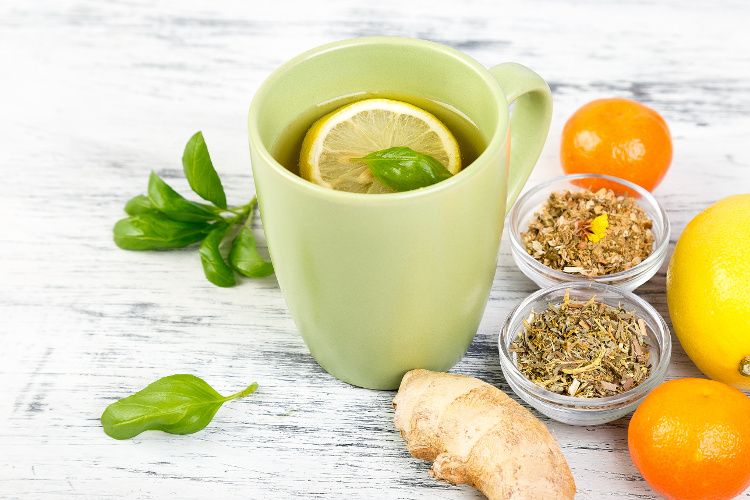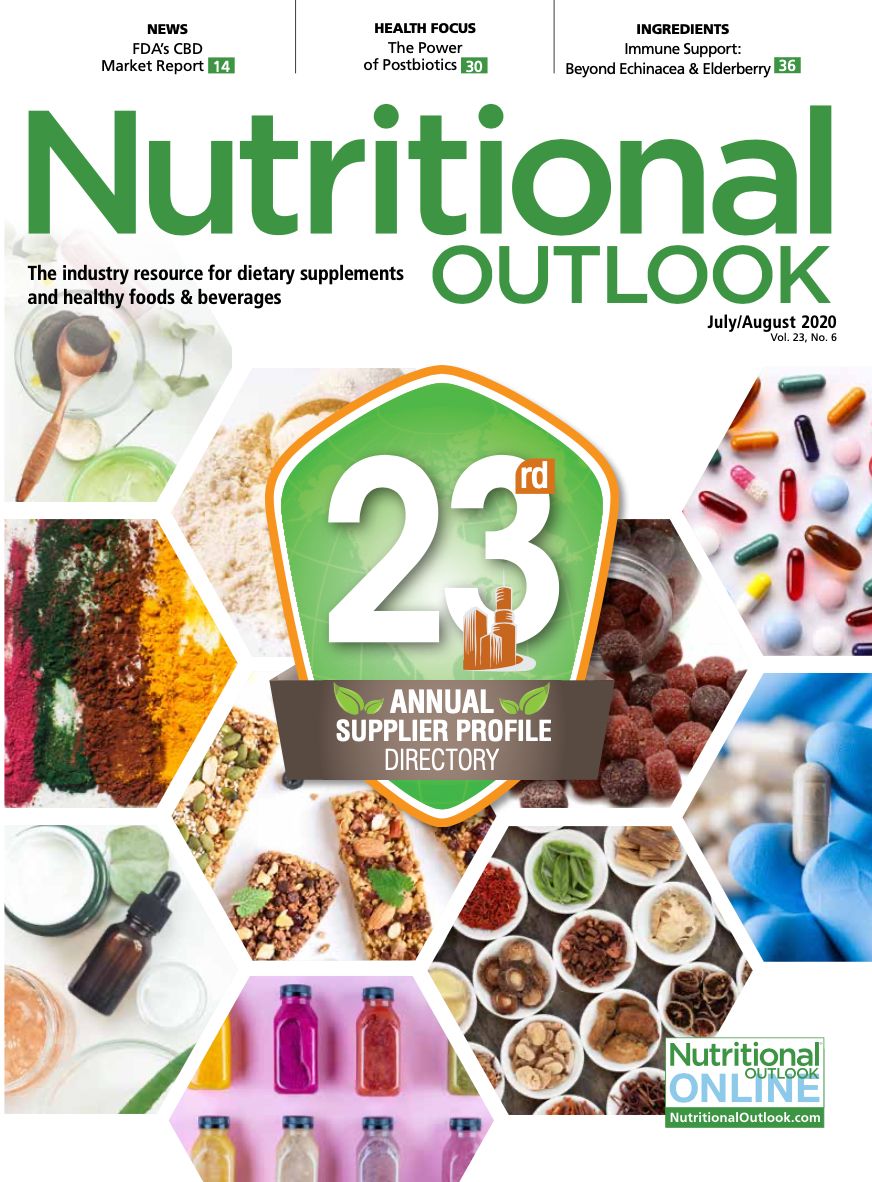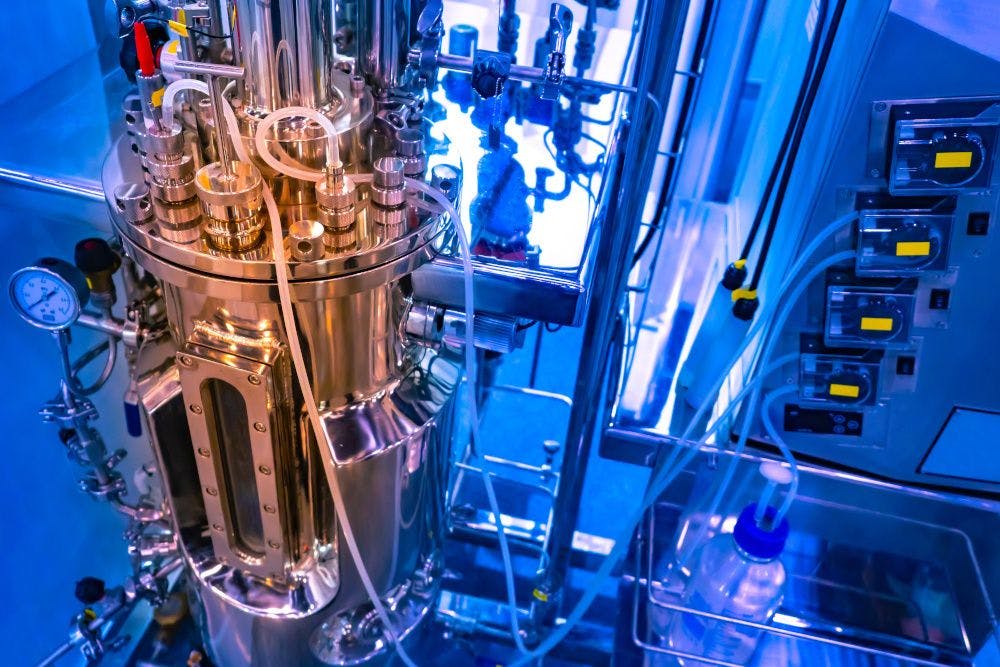Immune-supporting herbs: Garlic, ginseng, and Andrographis paniculata
Echinacea and elderberry have been dominant in the immune health category; however, a number of other herbs used as natural remedies since ancient times have shown promising results in clinical trials.
Photo © AdobeStock.com/bondarillia

Most people have realized good immune health is the foundation of a high quality of life, especially when our lives have been completely disrupted by the COVID-19 pandemic. Ingredients that can support the immune system are being sought. As more consumers look to herbal and botanical ingredients, echinacea and elderberry have been dominant in the immune health category; however, a number of other herbs used as natural remedies since ancient times have shown promising results in clinical trials and should not be omitted.
Garlic, the “Common Kitchen Ingredient”
One of them is garlic. Garlic is a plant in the onion family. While garlic has played an important role in cooking, its health and medicinal properties were recognized as early as 3000 BC. The ancient Greek Olympic athletes were given garlic as the earliest “performance enhancing” agent.
Garlic preparations, including garlic supplements, are most commonly consumed for their hypolipidemic, antiplatelet, and procirculatory effects. In addition to benefiting the heart and blood system, garlic preparations also appear to enhance foreign compound detoxification, restore physical strength, and improve immune functions. Allicin is the main active ingredient in garlic. However, allicin is unstable and quickly converts to other organosulfur compounds. The health benefits of garlic preparations likely arise from the synergistic activity of multiple phytochemicals.
Clinical studies have shown that garlic preparations may decrease the incidence, duration, and severity of upper respiratory tract infections. The first randomized, double-blind, placebo-controlled trial in this area was published by Garlic Centre, UK, in 2001.1 In this study, 146 participants were randomly assigned to receive either 1) an allicin-containing garlic supplement (n=73), or 2) a placebo (n=73) once a day for 90 days. A self-reported daily diary was used to record the cold infections, symptom severity, and duration. The results showed for the first time:
- Significantly fewer colds in the garlic supplement group (24 vs. 65, p<0.001)
- Significantly shorter average symptom duration in the garlic supplement group (1.52 vs. 5.01 days, p<0.001)
- Significantly shorter illness days in the garlic supplement group (366 vs. 111, p<0.05)
- Volunteers taking placebo showed a higher chance of getting more than one cold over the treatment period
Another randomized study2 conducted 10 years later by Susan S. Percival and colleagues from the University of Florida investigated the effect of aged garlic extract supplementation on cold symptoms and its potential mechanism of action. In this study, 120 healthy subjects between the ages of 21 and 50 were randomly given either 1) four aged garlic extract capsules (2.56 g), or 2) four placebo capsules per day for 90 days during cold/flu season. Aged garlic extract is a commercially available as an odorless product resulting from long-term extraction of garlic for up to 20 months. The illness diaries were recorded by participants through the 90 days of supplementation. On day zero and day 45, blood was obtained from fasting subjects to measure immune system function. The results showed:
- 21% fewer number of symptoms in the aged garlic extract group during the 90-day period (p<0.001)
- 61% fewer number of days experiencing cold symptoms in the aged garlic extract group during the 90-day period (p<0.001)
- 58% fewer number of work or school days missed because of illness in the aged garlic extract group during the 90-day period (p<0.001)
- The researchers also noticed a significant increase of two types of immune cells, natural killer cells and gamma-delta T lymphocytes, in the aged garlic group after 45 days consuming the extract. These immune cells are key players in the body’s defense against germs and tumors. This result indicates that supplementation with aged garlic extract may enhance cell-mediated immune responses.
Ginseng, the “Root of Longevity”
Ginseng, often dubbed the “root of longevity,” has been used in traditional medicine over centuries. Nowadays, ginseng preparation is one of the most popular herbal medicines available over the counter.
The two most commonly used and best-studied types of ginseng are Asian or Korean ginseng (Panax ginseng C.A. Meyer) and American ginseng (Panax quinquefolius). Asian ginseng treated with heat transforms into a form of ginseng called Korean red ginseng, which has biological activity similar to Asian ginseng.
Both Asian ginseng and American ginseng are believed to boost energy, improve physical performance, reduce stress, manage sexual dysfunction in men, and improve conditions associated with diabetes. There are over 100 bioactive compounds isolated from ginseng, including ginsenosides, polysaccharides, saponins, and peptides. Among them, the polysaccharides have been shown to exert immunomodulatory effect.
Efficacy of ginseng preparations in cases of common cold, flu, and upper respiratory infections has been investigated in a number of randomized controlled clinical trials.
- In a randomized, placebo-controlled, double-blind trial3 conducted in Milan, 227 volunteers received either a standardized extract of American ginseng (G115) capsule or a placebo at a dose of 100 mg once per day for 12 weeks. The result showed that, compared to the placebo group, the ginseng extract group experienced significantly lower incidence of influenza or colds (p<0.001), higher antibody titers (p<0.0001), and higher natural killer cell activity levels (p<0.0001).
- McElhaney JE et al. conducted three randomized, double-blind, placebo-controlled trials4-6 to investigate the effect of COLD-FX (CVT-E002), a proprietary extract of American ginseng, in the prevention of acute respiratory illness in vaccinated older adults. As a result, 200 mg of COLD-FX twice per day reduced the incidence and duration of acute respiratory illness during the influenza season.
- In a similar clinical study conducted by Predy et al.,7 323 non-vaccinated subjects between 18-65 years of age with a history of at least two colds in the previous year were recruited. The subjects who took two capsules (200 mg/capsule) of American ginseng extract daily experienced fewer colds compared to the placebo group. The proportion of subjects with two or more Jackson-verified colds was significantly lower in the ginseng group than the control group (10.0% vs. 22.8%, p=0.004).
- Asian ginseng preparations were also shown to be potentially effective for enhancing immune function. In one study,8 a significant lower incidence of acute respiratory illness was found in the group of subjects who took 1.0 g, three times per day, of Korean red ginseng concentrate compared to the control group (p=0.034). In another study,9 3 g of Ginsan (Y-75), polysaccharide from Asian ginseng, twice per day showed significantly enhanced natural killer cell cytotoxic activity (p≤0.0001), increased phagocytic activity of peripheral blood cells (p≤0.0001), and a serum level of TNF-alpha (p<0.001) from baseline after eight and 14 weeks.
Andrographis paniculata, the “Indian Echinacea”
Andrographispaniculata, also known as “king of bitters,” is a bitter-tasting herb used in Ayurveda and traditional Chinese medicine for centuries. It is used by local people to treat hepatitis, stomach and intestine disorders, kidney problems, and infectious diseases. Andrographis paniculata is popular in Scandinavia as a cold and influenza remedy and is also called “Indian echinacea.” The medicinal value of this plant has been attributed in part to andrographolide, the main diterpene lactone of Andrographis paniculata which shows anti-inflammatory and immune-stimulating activity.
Several clinical trials have shown that Andrographis paniculata preparations are able to improve recovery from common colds.
- One clinical trial by Caceres et al. in 1999 investigated the efficacy of standardized Andrographis paniculata extract in reducing the symptoms of common cold.10 In this study, 158 adult patients aged 25-50 years with uncomplicated upper respiratory tract infections received 1200 mg Andrographis paniculata dried extract per day (60 mg andrographolide/day) or placebo during a period of five days. Self-evaluations of the symptoms, including headache, fatigue, earache, sleep disturbance, soreness of throat, nasal secretion, expectoration, and frequency and intensity of cough, were collected by researchers at day 0, 2, and 4 of the treatment. On day 2, the symptoms of fatigue, sleep disturbance, soreness of throat, and nasal secretion were significantly improved in the Andrographis paniculata group compared to the placebo group (p<0.03). On day 4, a significant decrease in the intensity of all symptoms was observed in the Andrographis paniculata group (p<0.01).
- In a similar clinical study conducted by Saxena et al.11 with a total of 223 patients involved, 200 mg/day of Andrographis paniculata extract treatment (KalmCold) significantly improved all symptoms compared to the placebo groups at day 5 (p≤0.05).
- Kan Jang, developed by the Swedish Herbal Institute, has been used for more than 40 years in Scandinavia as an herbal medicinal product in treating uncomplicated upper respiratory tract infections. The main active ingredient in Kan Jang is standardized Andrographis paniculata extract. There are a number of clinical studies12-15 showing highly significant improvement of symptoms and shorter duration of common cold in the groups treated with Kan Jang (andrographolide 48 mg/day or 60 mg/day) compared to control groups.
Dr. Snow Jiang is a consultant in dietary supplement formulation. Snow obtained her PhD in Food Science from Cornell University. She also minored in Nutrition and Marketing. Snow’s research focuses on 1) the health benefits of phytochemicals in fruits, vegetables, and whole grains; and 2) natural products and herbal formulations for antioxidant, anti-aging, and anti-cancer activities. Snow’s career goal is to apply her knowledge in educating consumers so that they may make healthier selections in their diet.
References
- Josling P. “Preventing the common cold with a garlic supplement: a double-blind, placebo-controlled survey.” Advances in Therapy, vol. 18, no. 4 (July-August 2001): 189-93
- Nantz MP et al. “Supplementation with aged garlic extract improves both Nk and gamma-delta-T cell function and reduces the severity of cold and flu symptoms: a randomized, double-blind, placebo-controlled nutrition intervention.” Clinical Nutrition, vol. 31, no. 3 (June 2012): 337-344
- Scaglione F et al. “Efficacy and safety of the standardised ginseng extract G115 for potentiating vaccination against the influenza syndrome and protection against the common cold [corrected].” Drugs under Experimental and Clinical Research, vol. 22, no. 2 (1996): 65-72
- McElhaney JE et al. “A placebo-controlled trial of a proprietary extract of North American ginseng (CVT-E002) to prevent acute respiratory illness in institutionalized older adults.” Journal of the American Geriatrics Society, vol. 52, no. 1 (January 2004): 13-19
- McElhaney JE et al. “Efficacy of Cold-FX in the prevention of respiratory symptoms in community-dwelling adults: a randomized, double-blinded, placebo controlled trial.” Journal of Alternative and Complementary Medicine, vol. 12, no. 2 (March 2006): 153-157
- McElhaney JE et al. “Efficacy and safety of CVT-E002, a proprietary extract of Panax quinquefolius in the prevention of respiratory infections in influenza-vaccinated community-dwelling adults: a multicenter, randomized, double-blind, and placebo-controlled trial.” Influenza Research and Treatment. Published online July 20, 2011.
- Predy GN et al. “Efficacy of an extract of North American ginseng containing poly-furanosyl-pyranosyl-saccharides for preventing upper respiratory tract infections: a randomized controlled trial.” CMAJ: Canadian Medical Association Journal, vol. 173, no. 9 (October 25, 2005): 1043-1048
- Lee CS et al. “Preventive effect of Korean red ginseng for acute respiratory illness: a randomized and double-blind clinical trial.” Journal of Korean Medical Science, vol. 27, no. 12 (December 2012): 1472-1478
- Ha KC et al. “A placebo-controlled trial of Korean red ginseng extract for preventing influenza-like illness in healthy adults.” BMC Complementary and Alternative Medicine. Published February 8, 2012.
- Caceres DD et al. “Use of visual analogue scale measurements (VAS) to assess the effectiveness of standardized Andrographis paniculata extract SHA-10 in reducing the symptoms of common cold. A randomized double blind-placebo study.” Phytomedicine, vol. 6, no. 4 (October 1999): 217-223
- Saxena RC et al. “A randomized double blind placebo controlled clinical evaluation of extract of Andrographis paniculata (KalmCold) in patients with uncomplicated upper respiratory tract infection.” Phytomedicine, vol. 17, no. 3-4 (March 2010): 178-185
- Hancke J et al. “A double-blind study with a new monodrug Kan Jang: decrease of symptoms and improvement in the recovery from common colds.” Phytotherapy Research, vol. 9, no 8 (December 1995): 559-562
- Caceres DD et al. “Prevention of common colds with Andrographis paniculata dried extract. A pilot double blind trial.” Phytomedicine, vol. 4, no. 2 (June 1997): 101-104
- Melchior J et al. “Controlled clinical study of standardized Andrographis paniculata extract in common cold–a pilot trial.” Phytomedicine, vol. 3, no. 4 (February 1997): 315-318
- Gabrielian ES et al. “A double blind, placebo-controlled study of Andrographis paniculata fixed combination Kan Jang in the treatment of acute upper respiratory tract infections including sinusitis.” Phytomedicine, vol. 9, no. 7 (October 2002): 589-597






















